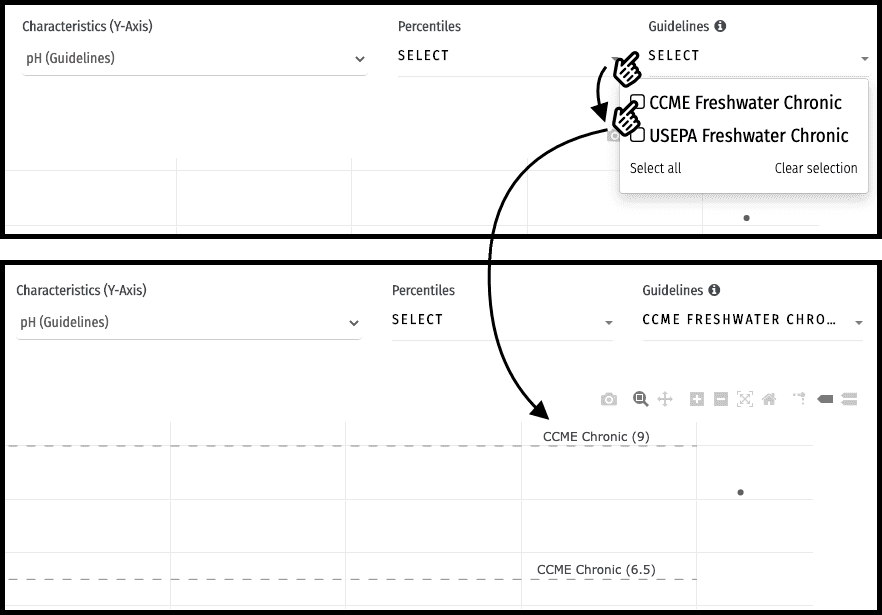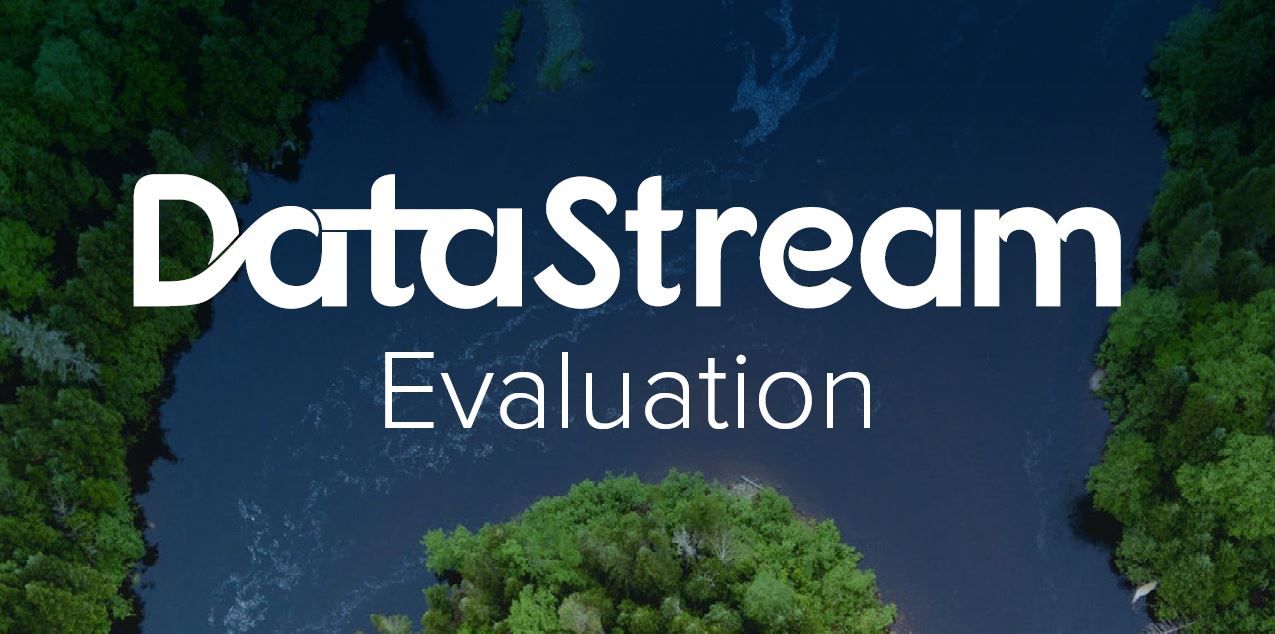
National Water Quality Guidelines on DataStream
October 29, 2020
DataStream’s visualization tool enables users to apply national water quality guidelines to datasets. Some key guidelines used by DataStream include the Canadian Water Quality Guidelines for the Protection of Aquatic Life, which are national standards set by the Canadian Council of Ministers of the Environment (CCME). These guidelines provide recommended ranges for some of the physical, chemical and biological characteristics that are commonly monitored in rivers, lakes, and oceans.
By incorporating the CCME Water Quality Guidelines for the Protection of Aquatic Life (the CCME guidelines) into DataStream’s visualization tool, data stewards can detect changes to the health of an aquatic ecosystem in relation to the national standards.
A national perspective
The CCME guidelines seek to enhance water quality monitoring in Canada. National water quality guidelines provide a consistent basis for assessing water quality conditions for a designated water use – in this case for the protection of freshwater and marine aquatic life.
The CCME guidelines are intended to provide protection to all forms of aquatic life from changes to natural conditions. They can be fixed numerical limits, calculated based on other water quality characteristics such as total hardness or pH, or defined based on a narrative statement.
In Canada, there are additional water quality guidelines specific to drinking water, recreational use, and agricultural water use.
Diving in: How it works
The CCME Water Quality Guidelines for the Protection of Aquatic Life that have fixed or calculated numerical limits can be applied to datasets using DataStream’s visualization tool.
Open a dataset using DataStream’s visualization tool and:
- Select monitoring locations
- Click Guidelines drop-down menu
- Select CCME Guidelines
*Note: Guidelines will appear where available.*

Considerations when applying national guidelines
While these guidelines are intended to be broadly applicable across the country, unique conditions within regions mean that the guidelines may be over- or under-protective in some areas.
For example, normal background levels of a substance may be naturally higher than the guideline and may not have any harmful effect on locally adapted aquatic organisms. The naturally high levels of suspended sediment present in the lower Liard River are a prime example of this. Sediment levels rise due to annual spring melt and rain events, which can lead to elevated concentrations of certain metals within the sediment. Understanding normal background conditions, also known as baseline conditions, is important when detecting change in an aquatic ecosystem.
Understanding the normal background conditions, also known as baseline conditions, is important context when detecting change in an aquatic ecosystem. Therefore, in addition to national guidelines, some provinces and territories have developed their own water quality guidelines specific to the local geology in the region.
About our water quality guidelines
You can learn more about the water quality guidelines that are displayed on DataStream here.
To learn more about the CCME source files used, visit our Resources page.
The results are in! DataStream's 2023 external evaluation
We asked for your feedback, and you delivered! DataStream is pleased to share the results of our 2023 external evaluation.
Community science on the agenda in the Great Lakes
Since DataStream began in 2016, we have focused on amplifying the important work of community-based monitoring groups. We’re excited that community science has been a central theme at the many gatherings we’ve attended over the past few months throughout the Great Lakes region.
Paddling and protecting the Madawaska
For the past four years, Madawaska Kanu Centre’s office team have been tracking the river’s water quality. Once a month, unless the conditions are too icy, they measure parameters like pH levels, dissolved oxygen and transparency.


